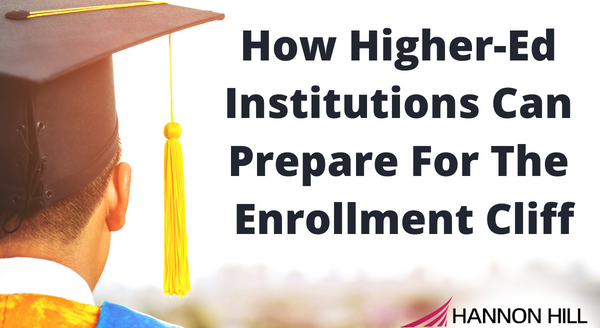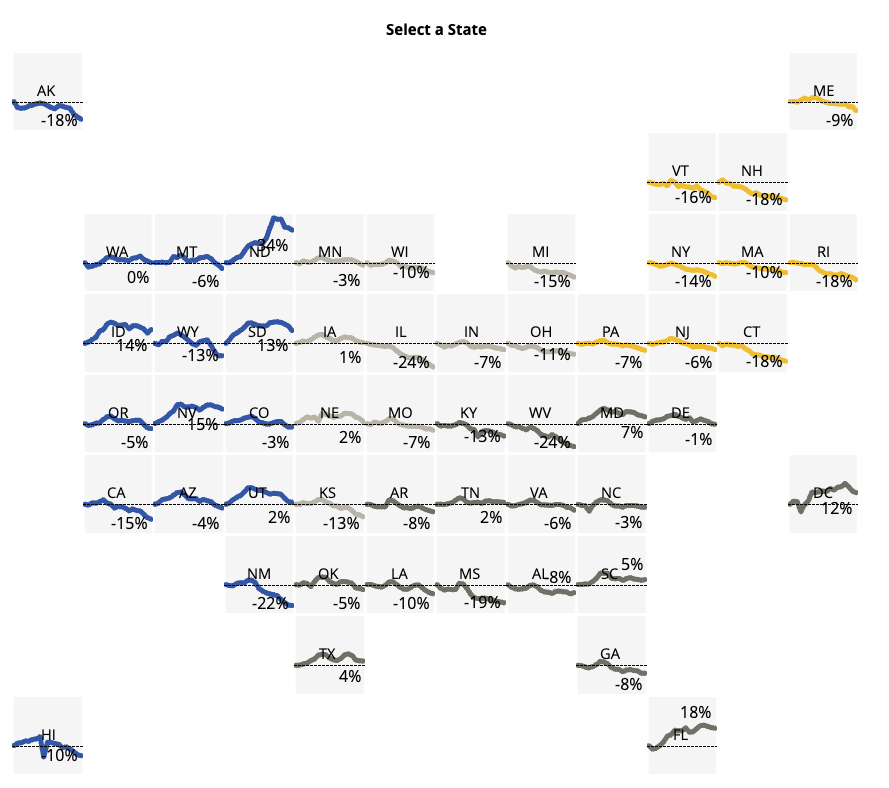
In his bestselling book, "This is Marketing," Seth Godin writes:
"Every three hundred thousand years or so, the north pole and the south pole switch places. The magnetic fields of the earth flip. In our culture, this happens more often than that," in higher-ed, the next flip on the horizon will be the demographic enrollment cliff (enrollment cliff).
The enrollment cliff is a term used to describe a notable drop in student enrollment rates in higher education institutions, particularly community colleges, expected to begin in 2025.
The term "cliff" refers to a steep drop in enrollment rates of traditional-aged college students of up to 24%, particularly in the Northeastern and Midwestern states,
according to the Western Interstate Commission for Higher Education's (WICHE) 10th Edition of Knocking at the College Door.

This phenomenon is due to the declining birth rates during and after the Great Recession of 2008, which means fewer students are graduating from high school and entering college, come 2025 and beyond.
The COVID-19 pandemic worsened this trend, which caused many prospective students to delay their education plans, take a gap year, or attend college part-time.
The enrollment cliff has significant implications for higher education institutions, particularly community colleges that rely heavily on enrollment for their funding.
It could lead to budget cuts, program closures, and layoffs of staff and faculty.
Moreover, it may even impact the economy, as there could be a shortage of skilled workers to meet the demands of the workforce.
To mitigate the effects of the enrollment cliff, some colleges have implemented strategies such as focusing on their brand storytelling efforts, expanding online and hybrid courses, and adapting to a more diverse student population.
The enrollment cliff poses a challenge for higher education institutions but also opportunities. There are several strategies that universities can employ to prepare for it.
The following are some possibilities:
In an episode of the Higher Ed Storytelling University, Carrie Phillips, Ed.D., who wrote her doctoral dissertation on how marketing might be able to mitigate the enrollment cliff, mentioned the importance of branding and storytelling when dealing with the enrollment cliff.
With nearly 4,000 degree-granting academic institutions in the United States, knowing what “a school stands for, who it serves, and how it differentiates itself from other schools is going to be more critical than ever,” says Phillips.
Effective storytelling, using engaging content, compelling imagery, or videos can show prospective students what it's like at an institution without having to set foot on campus while they're looking for a school to call home.
Phillips further mentioned that "higher-ed tries to be all things to all people," which will have to change with the upcoming shift.
It's imperative to determine which academic program makes sense, has demand and opportunity for a particular region, and which program may have to be cut, depending on the benefit-cost ratio of a given degree program, Phillips suggests.
Closing a program is a difficult decision indeed, but one that may have to be made for the good of the entire institution. It starts with seeing the university as what it is – a business and moving away from a traditional altruistic approach.
According to an article published by National Student Clearinghouse, more than 39 million Americans have some college but no credentials.
That's 39 million people who don't fall into the traditional-aged college students segment mentioned in WICHE's 10th Edition of Knocking at the College Door.
A 2019 report by the Lumina Foundation states that:
"For adults with some college credit but no degree, the challenge of balancing work with going to class is the most common reason they end up leaving college."
Tim Fuller, founder of Fuller Higher Ed Solutions, LLC, seconds that when he said, "our biggest competition for an adult learner is not another institution, but it's life itself and all the complications like family and work and then juggling education," during an episode on the Higher Ed Marketer podcast.
Thankfully, since the report's publication, a paradigm shift occurred with the onset of the global pandemic in the Spring of 2020, when "84% of America's undergraduates were found to have had some or all of their classes moved to online-only instruction," states a press release published by The National Center for Education Statistics.
Offering online and hybrid courses that allow students to complete coursework remotely, at their own pace and on their own schedule, at a price lower than that of a traditional on-campus experience, can make it easier for non-traditional students to balance work and family responsibilities with their education.
Hannon Hill's marketing specialist, Chris Rapozo, a non-traditional student graduate of the University of Florida Online, lives to prove it.
A census data by the Pew Research Center, reported by the CPA Journal, found that “the decline in birth rate was not uniform across demographic groups. One in four post-millennials are Hispanic, and non-Hispanic whites now comprise only a slight majority (52%) of the population.”
A report by USA Facts revealed that:
“Between 2010 and 2021, the Hispanic/Latino population had the most growth increasing by 1.6 million [sic] from 4.3 million in 2010 to 5.8 million in 2021.”
Comparing the information above with the WICHE report, colleges and universities must focus on first-generation traditional-aged students from minority groups.
Admissions departments may need to change their enrollment approach for families in South Florida, where English isn’t necessarily the predominant language. The reason for a necessary change in approach is that potential students’ parents and caretakers, often non-English speaking immigrants, may be unable to navigate the enrollment process as seamlessly as their caucasian counterparts.
Also, increase enrollment efforts with minority groups by reducing high-level academic jargon on your institution's website that causes a disconnect between an school and its potential students and their caretakers.
The enrollment cliff presents a significant challenge for universities as institutions strive to maintain enrollment and financial stability in an ever-changing higher education landscape.
To address this challenge, universities must adapt and innovate.
By doing so, universities can create a more diverse, inclusive, and accessible learning environment that meets all students' needs while strengthening their ties to the community and promoting social change.
Ultimately, the enrollment cliff presents an opportunity for universities to reimagine the future of higher education and to create a more resilient, adaptable, and sustainable model that can thrive in the years to come.
If you need help getting your website on the right track to navigate the upcoming enrollment cliff, fill out the form below and let us know how we can help.
Last Updated: Mar 28, 2023 11:00 AM